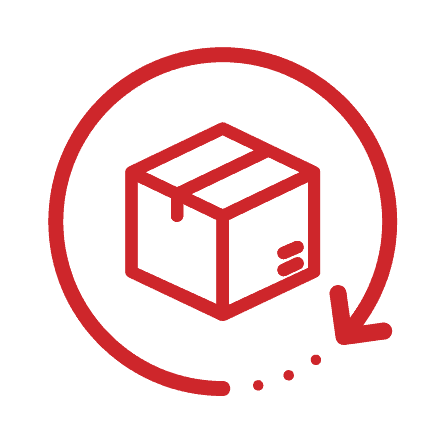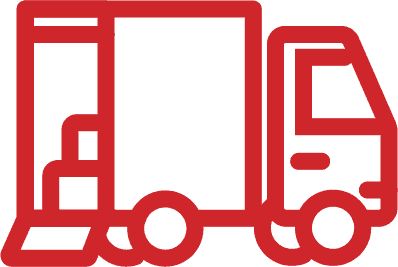Motivated
by your success
Good fulfillment is a given. We take pursuing perfection to a whole new level.
If a fulfillment mistake hurts your business, it should hurt ours, too. That’s what aligns our success with yours. And it’s what our guarantees are all about.
Accountability and trust
We were founded by ecommerce entrepreneurs who know first-hand how poor fulfillment can hurt a business.
That’s why they built Red Stag on the idea of aligned motivations.
When you win, we win. And, since fulfillment errors can hurt your business, they should hurt ours, too.
Our guarantees make sure that alignment stays intact.
On the rare occasion that we make a mistake, we’ll fix it at no cost to you and charge ourselves a penalty fee.
You won’t find commitment like that anywhere else in the industry.
Guarantee #1
2-day receiving
“Out of stock” is never okay, especially when you have
product sitting in a warehouse just waiting to be received.
You lose revenue and risk damaging your brand with every missed order.
That should never happen.
We guarantee to receive all new inventory and have it ready for orders within two business days of arriving at our warehouse.
Guarantee #2
No shrinkage allowed
Inventory is an investment in your business. It must be treated with care to keep your customers happy and your business healthy. But most 3PLs treat shrinkage as a “cost of doing business,” without accountability for lost or damaged product.
We think that’s unacceptable.
Red Stag has a strict zero-shrinkage policy. If any item is lost or damaged, we’ll reimburse you for your cost so you don’t lose a dime of your investment.
Guarantee #3
On time, every time
Fast shipping is a must for any ecommerce business to survive and grow. When orders sit idle, you risk disappointing and frustrating your customers.
That’s simply not an option.
We’ll get customers’ orders out the door in accordance with your service level agreement—or pay you $50 for every late parcel. Same-day shipping is also available.
Guarantee #4
Always accurate orders
When customers receive the wrong item or quantity, it has real consequences for your business. So, while mistakes can happen, they should be rare.
And they shouldn’t cost you money.
We’ll pay you $50 for each mistake and cover the shipping costs to fix them (including returning the incorrect items).
As a partner, I take them for granted now. That’s one less thing to worry about.
The status quo won’t cut it
Most 3PLs are transactional, offering a faceless, commoditized service. They’ll gladly take your money, but aren’t interested in getting to know your business first.
It shouldn’t be that way. Your business—and your customers—are too important.
How most 3PLs treat you

Cookie-cutter support
You wait a lifetime for customer support only to have them talk in circles and avoid accountability.

Generic pricing
You’re forced to squeeze into their commoditized system, regardless of your unique needs.

Average service
Disappointment is baked into their processes, and you’re expected to pay for their mistakes.
VS
The Red Stag difference

Custom Pricing
Agreements are carefully crafted for your unique situation. Pay only for the services you need.

Hands-on support
You need challenges resolved quickly and done right. Our experts are always standing by.

Automated service
Perfection is the goal. But if a mistake happens, we’re the ones footing the bill, not you.
Our job is to help your business grow
while making your job easier.
Services other 3PLs won’t touch
Red Stag is built to tackle the tough stuff. Services other fulfillment providers
won’t touch have been baked into our processes from day one.
In other words, we can do just about anything.
Specialized services from Red Stag

Returns management
Product returns can quickly consume all of your time and energy. Let us take care of that for you.

Same-day shipping available
We’ll stay late to ship items the day they come in. Because orders won’t wait for normal business hours.

Big, bulky, heavy
Large items are tough to ship. But we’ve been handling the big stuff for more than 10 years.

Kitting & assembly
Multiple manufacturers and subscription offers mean more work to fulfill orders. We’re ready for it.
Discover how we helped
Homestead Brands see 10x growth

Get more with less
- No setup fees
- No hidden fees
- No long term commitments
- No SKU management fees
Reach out to start a conversation

Lets find how Red Stag can help your ecommerce business.
Get started by scheduling a quick chat.




